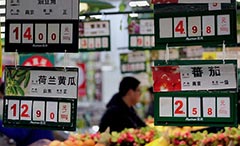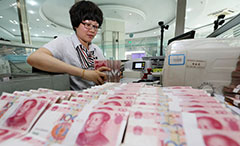Yuan dips as capital controls relaxed
2017-09-13
China Daily
The renminbi weakened on Sept 12 for the first time in two weeks after the central bank relaxed capital controls on Sept 11. Analysts said the currency will have more two-way fluctuations in coming months.
The People’s Bank of China set the yuan’s daily reference rate at 6.5277 per dollar on Sept 12, down by 0.43 percent from Sept 11. It is the first time the rate has been set lower day-on-day in 11 trading sessions and marked the sharpest downward adjustment since Jan 9.
The monetary authority allows the yuan to rise or fall by at most 2 percent on either side of the reference rate.
In offshore trading, the yuan weakened to 6.5519 per dollar from 6.5335 in intraday trading on Sept 12 after falling to 6.5400 from 6.5018 on Sept 11. The yuan’s rate against the dollar in offshore markets had been rising strongly since late last year.
The weakening of the yuan came after it was reported on Sept 11 that the central bank has eliminated the rule requiring banks to set aside a 20 percent deposit on forward sales of foreign exchange, which was imposed in 2015 to thwart capital outflows and keep the yuan stable.
The scrapping of the rule “is a sign that the constantly strengthening yuan is now at the forefront of the regulator’s attention”, said Han Huishi, a senior researcher with China Construction Bank. “Too fast appreciation (of the yuan) is no longer welcomed,” he said.
He said the elimination of the deposit policy for banks’ offshore yuan trading may not directly curb the currency’s appreciation, but it is a move to neutralize the policy of foreign exchange management.
After the policy change, the yuan may experience more two-way fluctuations, he added.
Shen Jianguang, chief economist at Mizuho Securities Co Ltd, expected the yuan to remain relatively stable despite the policy change. He expected its big gains since August will not be repeated in the coming months even if it continued to appreciate, as foreign exchange regulators are likely to further ease controls on capital outflows.
“It is possible that the yuan may fluctuate at around 6.5 per dollar by the end of this year,” he said.
Analysts also said the easing yuan will help stabilize China’s exports, which grew by 5.5 percent in August in dollar terms, the second consecutive month that the growth rate had fallen.


